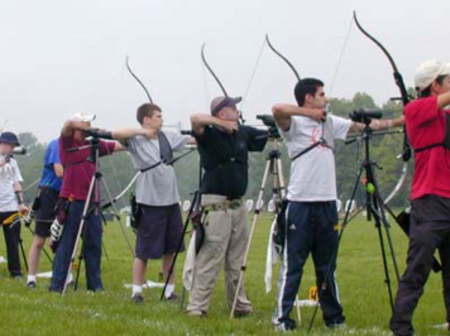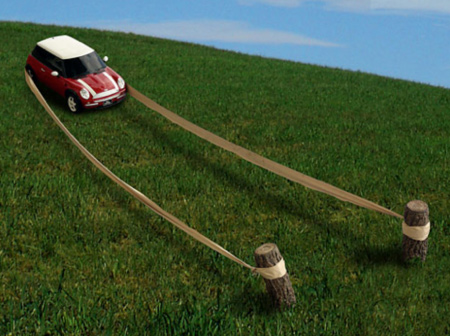
Source Archery Competition, Casito, Wikimedia Commons
Energy is defined as the ability to do work and is measured in the unit Joules (J). There are many forms of energy which we will discuss. All these forms of energy can be classified into one of the two categories or "states": either potential energy or kinetic energy.

Source Archery Competition, Casito, Wikimedia Commons
The energy held in the bow is potential because the archer has not yet released the string. Once the string and arrow are in motion, the energy becomes kinetic.

Source: Sling Car, Pitsco
When in its stretched position, the rubber band stores potential energy due to elasticity.

Source: Energy of Position, Zonaland Education
Look at the flower pots above. The one on the left is on the floor, and the one on the right is a few centimeters higher in its position. The one on the right is at a higher gravitational potential energy than the one on the left.

Source: Texas Relays, https://www.facebook.com/texasrelays
Any object that has motion—a person walking, a thrown football, an apple falling from a tree, and a charged particle in an electric field—are all examples of kinetic energy at work.
Objects that have potential energy can later have kinetic energy. Think of our apple in the tree. When the apple is attached to the tree, it has potential energy. As it falls, the energy becomes kinetic.

![]() The following video shows the interchange between potential and kinetic energy in a trebuchet.
The following video shows the interchange between potential and kinetic energy in a trebuchet.